8 Foods That Worsen Diabetes Symptoms—And 7 Healthier Alternatives to Choose Instead

Managing diabetes requires careful attention to diet. Certain foods can exacerbate symptoms, while healthier alternatives can help maintain better blood sugar levels. Here are eight foods that may worsen diabetes symptoms and seven healthier options to consider.
1. Sugary Breakfast Cereals
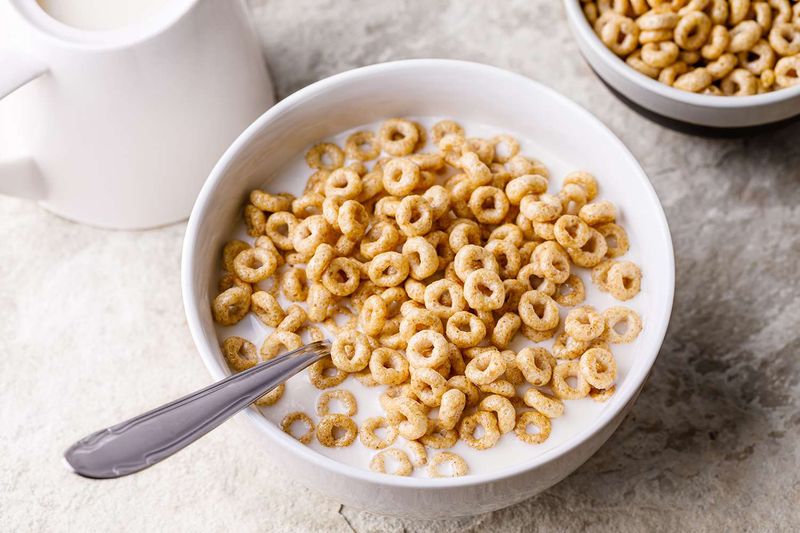
Brightly colored boxes promise a cheerful start, yet sugary cereals often hide high glycemic pitfalls. Even those branded as ‘whole grain’ can be sugar-laden traps. Their refined carbs and added sugars create a quick spike in blood glucose levels, setting a challenging tone for the day.
Switching to a low-sugar, high-fiber alternative can significantly impact morning blood sugar control. Opt for cereals with at least 5 grams of fiber and less than 5 grams of sugar per serving. This simple change can transform a breakfast from risky to rewarding, providing a stable energy supply.
2. White Bread
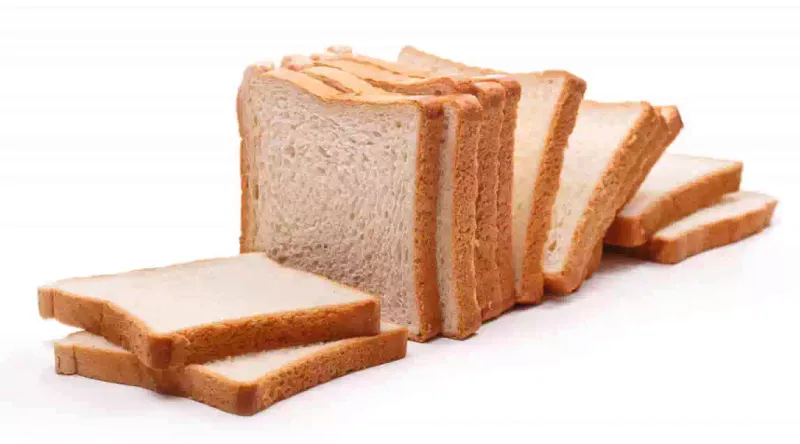
The soft, pillowy texture of white bread is a staple in many households. However, its refined flour base offers little in terms of fiber or nutrients, leading to rapid digestion and subsequent blood sugar spikes. This can make post-meal glucose management a struggle.
Choosing bread made from whole grains with visible seeds or kernels can be a game-changer. Whole grains digest more slowly, leading to a gentler increase in blood sugar levels. This small adjustment can make a significant difference in daily glucose control.
3. Sweetened Beverages (Soda, Sweet Tea, Energy Drinks)

Fizzy, refreshing, and sweet – these beverages are often a go-to for a quick thirst quencher. Yet, their high sugar content and lack of nutritional value create a significant challenge for blood sugar stability.
The rapid absorption of sugars from these drinks can lead to sharp glucose spikes and energy crashes. Opting for unsweetened herbal tea or sparkling water with a hint of lemon can be a delightful and diabetic-friendly alternative. These choices offer hydration without the sugar rollercoaster, promoting steady energy levels.
4. French Fries

Golden, crispy, and tempting, French fries often accompany meals as a beloved side dish. However, they’re a potent combination of refined carbs and deep-fried fats, contributing to insulin resistance and inflammation.
Switching to baked sweet potato fries can offer a tasty alternative. Sweet potatoes are rich in fiber and antioxidants, providing a slower and more consistent impact on blood sugar. This swap can still satisfy the craving for something crispy and savory while supporting healthier glucose levels.
5. Flavored Yogurts

A seemingly healthy snack, flavored yogurts often contain hidden sugars and fruit syrups, transforming them from nutritious to dessert-like. This can lead to unexpected spikes in blood glucose.
Opting for plain Greek yogurt with fresh berries offers a satisfying and nourishing alternative. Greek yogurt is high in protein, and when paired with fiber-rich berries, it provides natural sweetness without the sugar overload. This combination supports longer satiety and a more balanced blood sugar response.
6. Processed Lunch Meats

Convenient and savory, processed lunch meats like ham and salami are popular sandwich fillers. However, their high sodium, preservatives, and nitrates can exacerbate inflammation and raise blood pressure, both concerning for those managing diabetes.
Switching to roasted or grilled chicken breast as a sandwich filler provides a cleaner source of protein. This option is free from the added chemicals and supports healthier blood pressure levels without sacrificing flavor.
7. Baked Goods (Pastries, Muffins, Cakes)

The aroma of freshly baked pastries is hard to resist, yet these treats combine refined flour, sugar, and unhealthy fats. This trio can lead to erratic blood sugar levels and difficulties in maintaining balance.
Choosing homemade options with whole grain flours, natural sweeteners like honey, and healthier fats can reinvent these delights. With mindful ingredient swaps, baked goods can transition from a guilty pleasure to a more balanced treat, better aligned with stable glucose management.
8. White Rice

White rice, a staple in many cuisines, lacks fiber and has a high glycemic index, causing faster spikes in blood glucose. This can pose a challenge for maintaining stable blood sugar levels throughout the day.
Switching to quinoa or cauliflower rice can be a beneficial change. Both alternatives offer higher fiber content and a lower glycemic impact, making them suitable bases for savory dishes. This swap can enhance meals with added nutrients and a gentler effect on blood sugar.
9. Steel-Cut Oats or Overnight Chia Oats
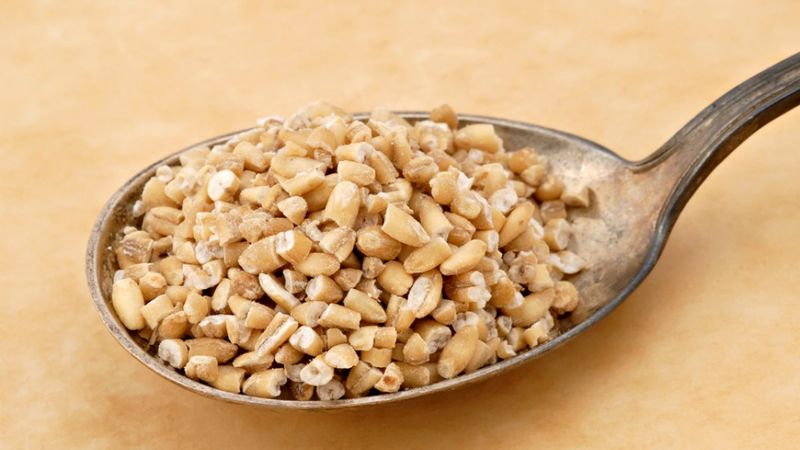
Hearty and satisfying, steel-cut oats or overnight chia oats are morning champions for those managing diabetes. Low in sugar and rich in soluble fiber, they slow digestion and improve insulin response.
The preparation can be customized with toppings like nuts, seeds, and berries, enhancing both flavor and nutrition. These oats offer a comforting start to the day, ensuring energy without the sugar spikes associated with processed cereals. It’s a simple yet effective way to support better blood sugar control.
10. Sprouted Grain or Whole Grain Bread
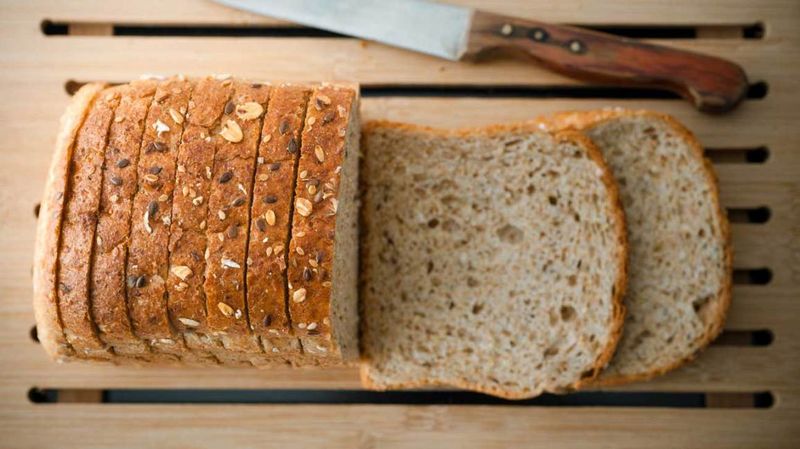
With its dense texture and nutty flavor, sprouted grain or whole grain bread is a hearty alternative to white bread. Rich in fiber and essential nutrients, it moderates the blood sugar impact of carbohydrates.
This bread supports a more gradual release of glucose into the bloodstream, aiding in overall blood sugar management. Paired with spreads or toppings of choice, these breads can transform a simple meal into a nourishing experience, proving both satisfying and mindful of glucose levels.
11. Unsweetened Herbal Tea or Sparkling Water with Lemon

Refreshing and versatile, unsweetened herbal tea or sparkling water with a hint of lemon provides hydration without the sugar spikes of sweetened beverages.
These drinks can be enjoyed hot or chilled, making them suitable for any season. Switching to these alternatives supports stable energy levels and overall well-being. They’re a delightful way to stay hydrated while respecting blood sugar needs, offering a cleanse for both the palate and the body.
12. Baked Sweet Potato (with Skin)

Vibrantly orange and naturally sweet, baked sweet potatoes offer a nutritious alternative to regular fries or white potatoes. High in fiber and antioxidants, they provide a more stable impact on blood glucose levels.
This root vegetable is versatile, suitable for roasting, mashing, or serving as fries. The natural sweetness and nutrient-rich profile make it a perfect side dish for those aiming to manage diabetes through diet. This simple swap can transform meals into healthful feasts.
13. Plain Greek Yogurt with Berries
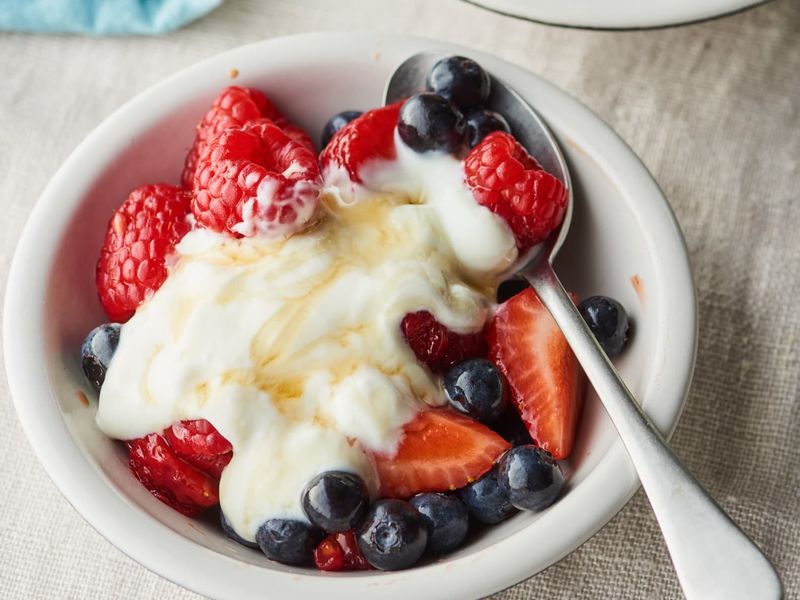
Rich in protein and probiotics, plain Greek yogurt with berries offers a nourishing snack or breakfast option. The natural sweetness from fiber-rich berries complements the yogurt’s creamy texture, making it a satisfying and balanced choice.
This combination supports longer satiety and a steady release of energy. It’s a perfect pairing for those looking to maintain blood sugar stability while enjoying a flavor-packed treat. This simple dish can be a delightful staple in a diabetes-friendly diet.
14. Roasted or Grilled Chicken Breast

Lean and flavorful, roasted or grilled chicken breast provides a clean source of protein without the added concerns of processed meats. It’s versatile and can be seasoned to taste, fitting well into a variety of dishes.
This choice supports healthier blood pressure levels and minimizes inflammation, making it a solid option for those managing diabetes. Whether served alongside vegetables or incorporated into salads, chicken breast maintains its status as a nutritious staple.
15. Quinoa or Cauliflower Rice
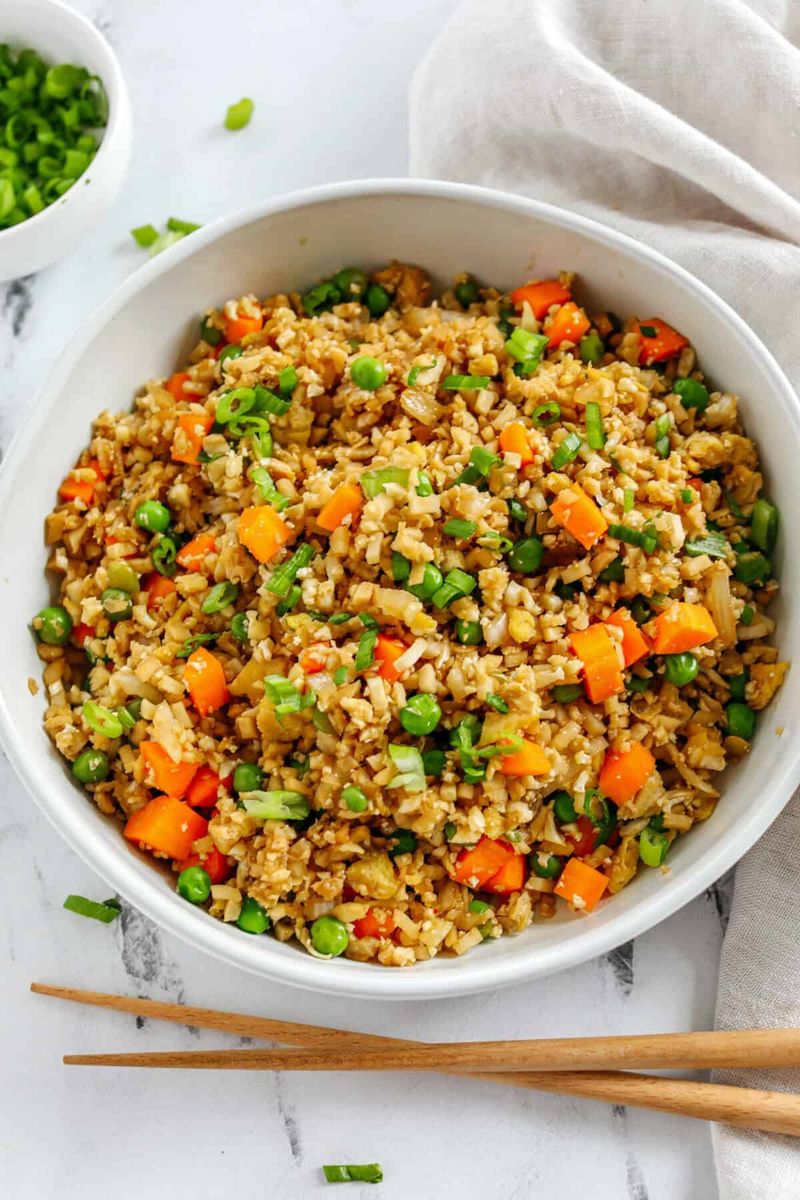
Nutty and nutrient-rich, quinoa or cauliflower rice offers a wholesome alternative to white rice. Their lower glycemic index and higher fiber content make them excellent choices for those looking to balance blood sugar levels.
These grains can be flavored to suit any dish, providing both versatility and nutrition. Incorporating them into meals not only enhances the nutritional profile but also supports more consistent glucose management. It’s a delicious way to diversify a diabetes-friendly diet.
